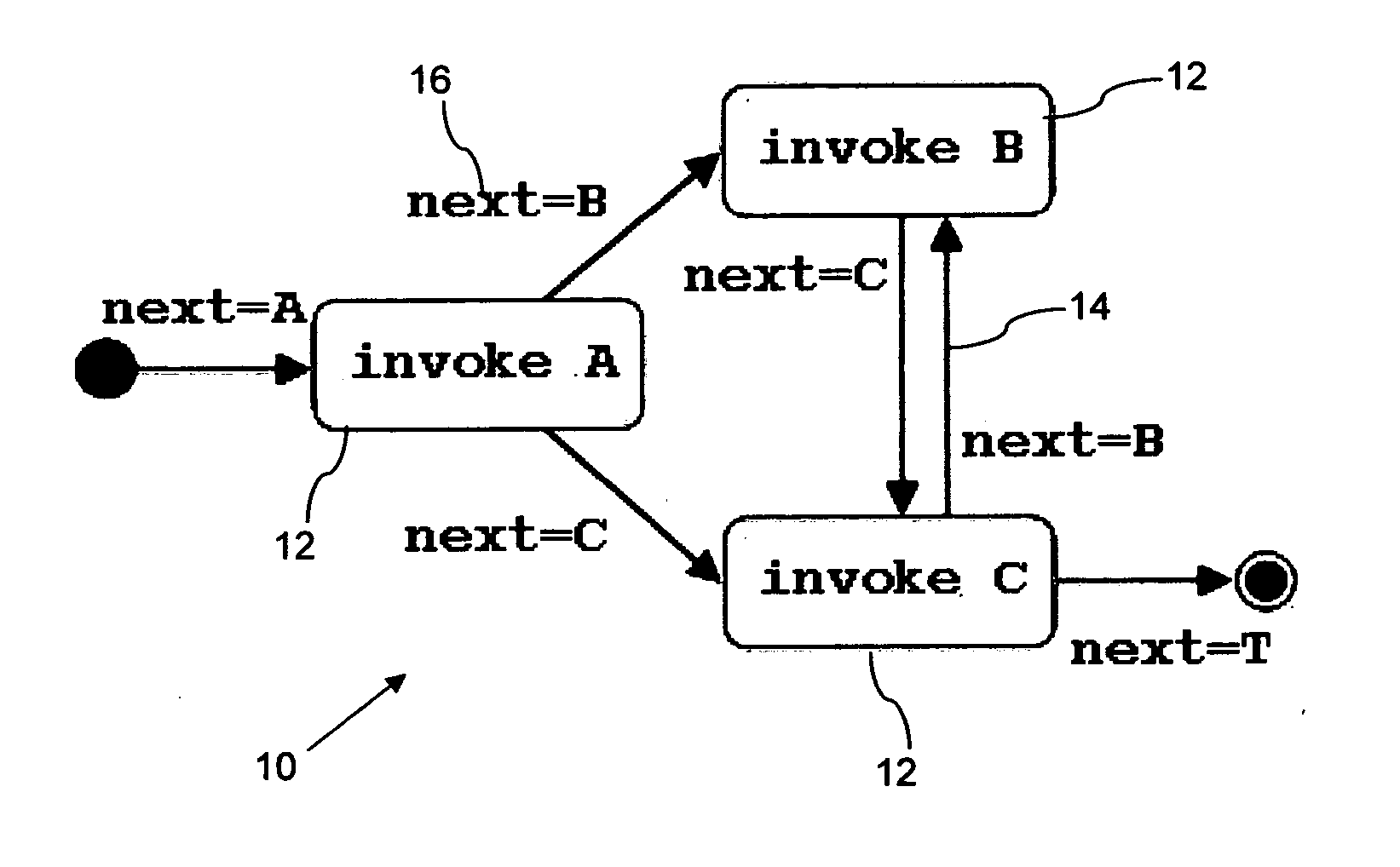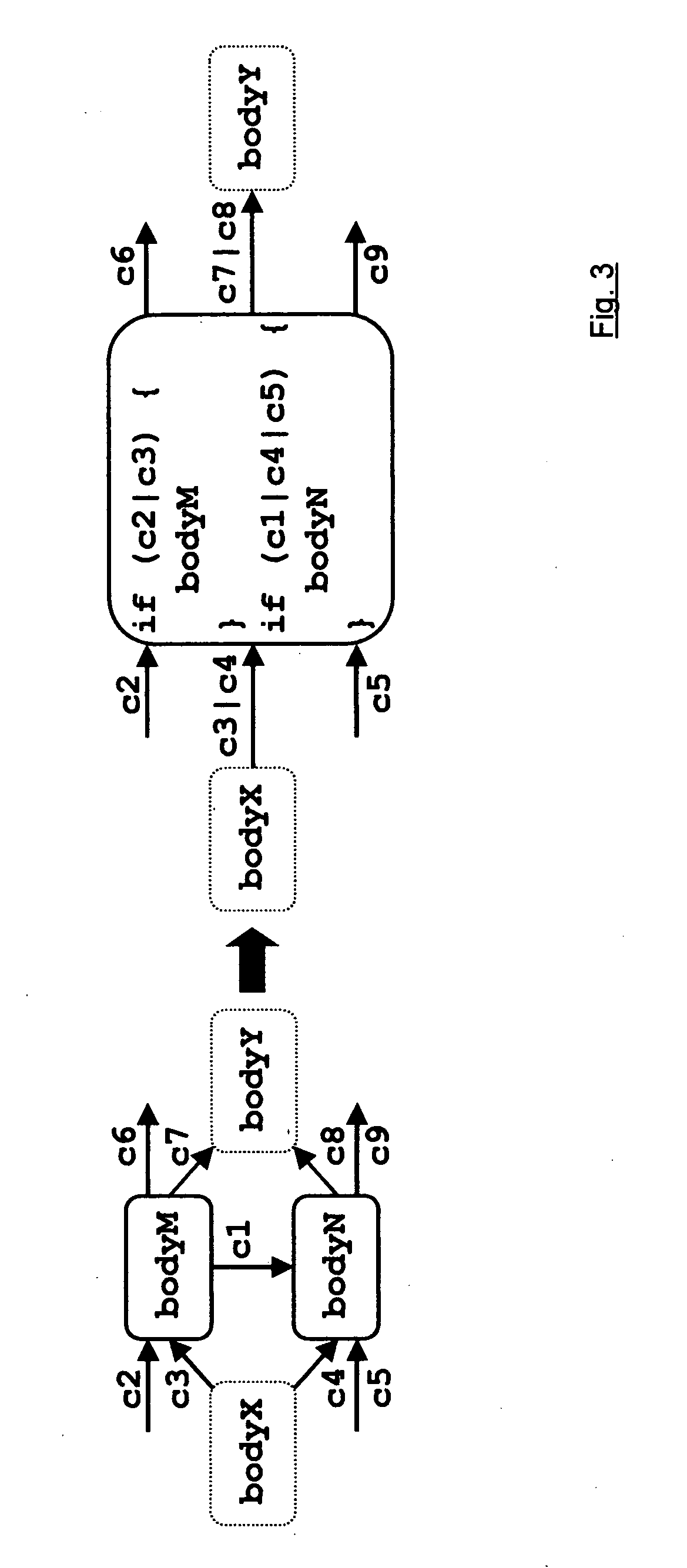Data processing method and system
- Summary
- Abstract
- Description
- Claims
- Application Information
AI Technical Summary
Benefits of technology
Problems solved by technology
Method used
Image
Examples
Embodiment Construction
[0029]FIG. 1 shows a simple directed graph 10, comprised of nodes 12 and edges 14. The graph 10 in FIG. 1 is shown graphically, but can equally be represented in a large number of different ways, such as a list of nodes 12 and edges 14, or, in the case of specific programming and modelling languages, as a series of terms as defined by those languages. Any such representation can be considered to be a model of a directed graph.
[0030] In order to represent business processes and workflows, the standard definition of a flow graph is extended. Firstly, a node 12 is assumed to be annotated with a behavior which defines the execution of the node 12. The behavior will be described with a behavioral metamodel, but a simple string representation will be used for compactness of the representation. The behavior of node A in FIG. 1 is written as invoke A.
[0031] Secondly, to every edge 14 a condition 16 called a guard is assigned such that the guards of all edges leaving a node are mutually ex...
PUM
 Login to View More
Login to View More Abstract
Description
Claims
Application Information
 Login to View More
Login to View More - R&D
- Intellectual Property
- Life Sciences
- Materials
- Tech Scout
- Unparalleled Data Quality
- Higher Quality Content
- 60% Fewer Hallucinations
Browse by: Latest US Patents, China's latest patents, Technical Efficacy Thesaurus, Application Domain, Technology Topic, Popular Technical Reports.
© 2025 PatSnap. All rights reserved.Legal|Privacy policy|Modern Slavery Act Transparency Statement|Sitemap|About US| Contact US: help@patsnap.com



